Agrigento, Sicily
On to Agrigento - about 2 hours due south of Palermo, on the southern coast of Sicily. Agrigento is a good-sized city, but just about no one goes there to see the city. Just outside Agrigento is the “Valle dei Templi,” a stretch of land that once had some ten or twelve Greek temples on it. Now, three remain in different stages of completeness and condition. All three, and the remnants of others, are gob-smacking.
I should point out that the “Valley of the Temples” is built on a ridge. Go figure.
The Valle dei Templi temples were built by the Greeks in the fourth and fifth centuries BC. Most were destroyed by the Carthaginians after their victory over the Greeks in the Second Punic War (241 BC to 201 BC). Several of the constructions that were spared the razing of the Carthaginians were not maintained afterwards, and eventually fell into ruin. Some temples were restored by the Romans and used as churches.
One temple here - called Temple Zeus Olympian - was the largest Greek temple in the world, bigger even than the Parthenon in Athens. The Cartheginians destroyed much of it, and its ruin was completed in the 18th century when it became essentially a quarry providing stones for many constructions in the area. (Makes you want to cry, doesn’t it?) The Temple of Zeus Olympian had many thirty-foot high statues that formed a structural ring around the top of the walls. The only one that remains is in the archeological museum nearby, and is the only large piece of the temple remaining.
Valli dei Templi definitely qualifies as “a picture is worth a thousand words” place, so I’ll cut to the pictures.
A Hint at What We'll See Here
As we walked toward the Valle dei Templi we saw these views:
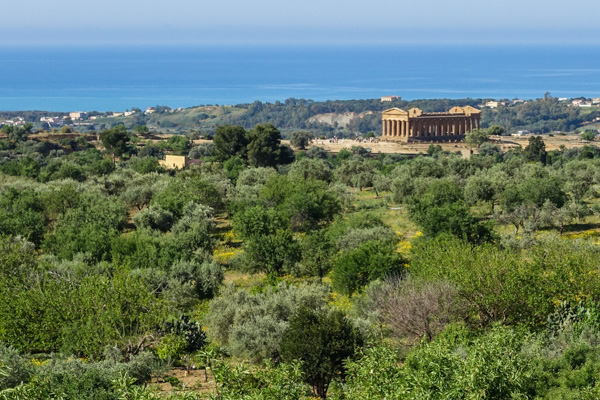
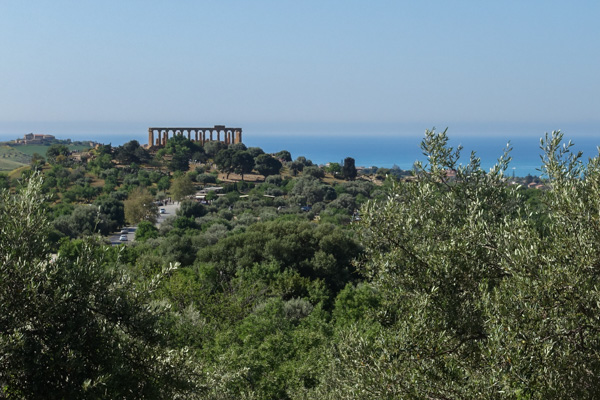
Temple of Juno
Once we entered the site, with quite a few other temple-touring folks, we came first to the Temple of Hera Lacinia, also known as Juno Lacinia or Temple of Juno (archaeologists, exhibiting a grave lack of romance, call it Temple D). This temple dates back to around 450 B.C. It’s about 120 ft by 50 ft, with six columns on the short sides and thirteen on the long ones and is classified as a Doric temple.
The reconstruction is limited to about 30 columns and the peristyle along one edge. The peristyle is the horizontal band of stone supported by the columns; it formed the base of the roof.
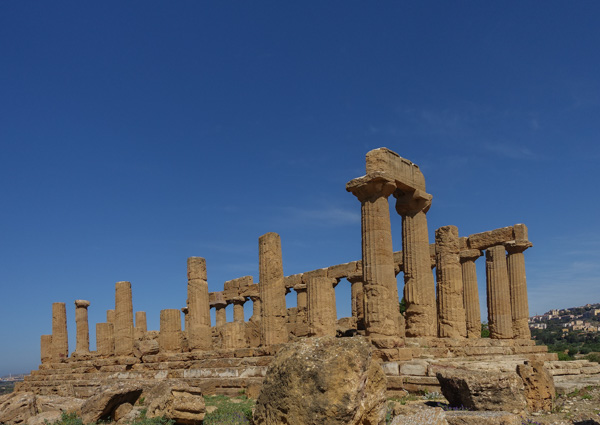
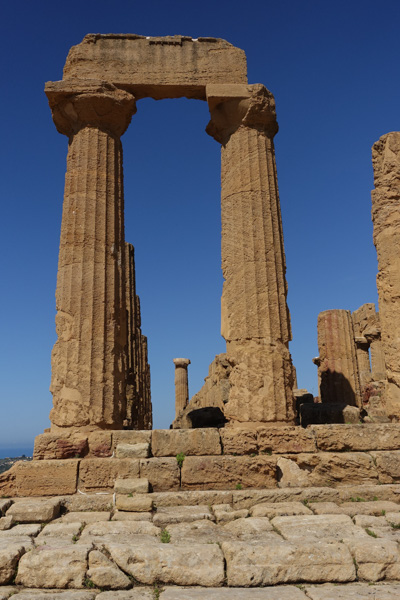
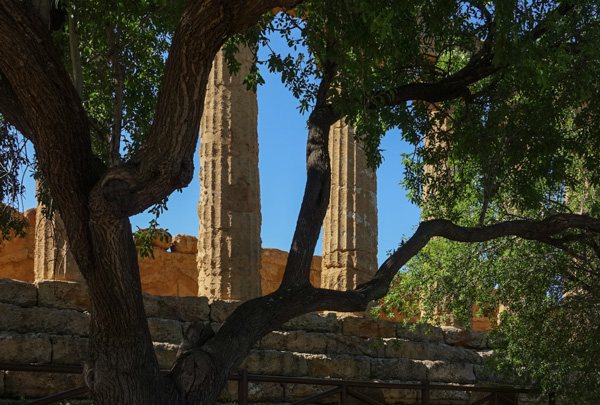
Walls
In its heyday, the Valley dei Templi was completely encircled with walls. Much of the wall remains, though clearly in a reduced state. The wall has many semi-circular niches, which were used to bury high-ranking soldiers and leaders in the 4th and 5th century BC.
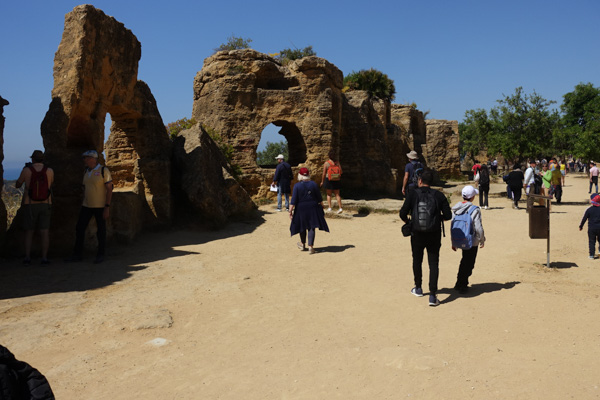
Temple of Concordia
The Temple of Concordia, slightly larger than the Temple of Juno and sharing its 6 column by 13 column construction, is the best preserved and restored temple in the site. It was converted to a Christian church in the fifth century AD, at which time some major interior renovations were carried out. But the exterior remained pretty much as original and is just stunning. Remember, this was built some 2,500 years ago.
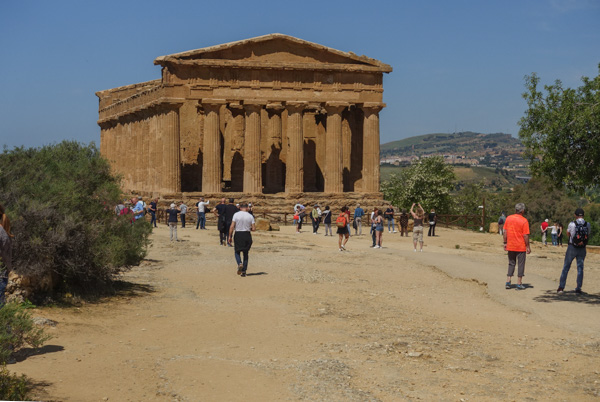
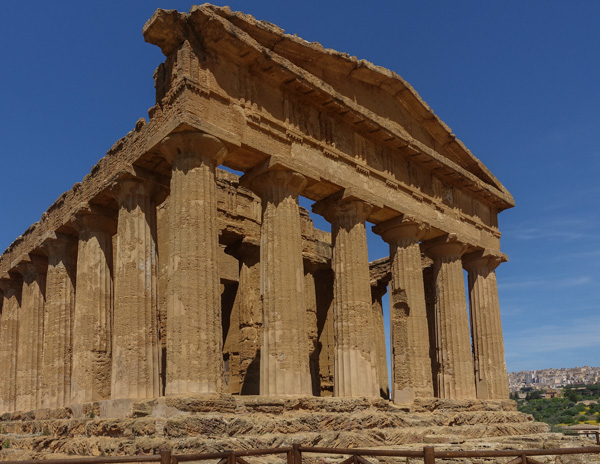
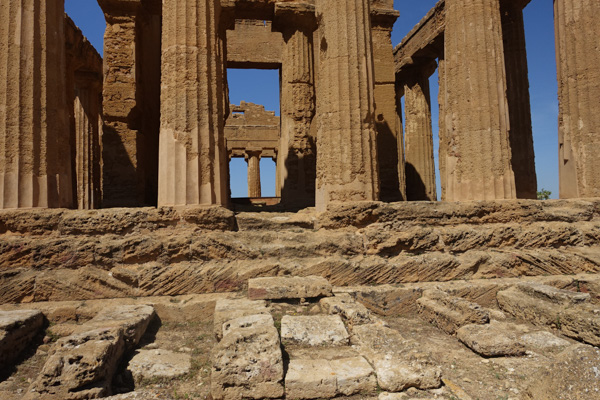
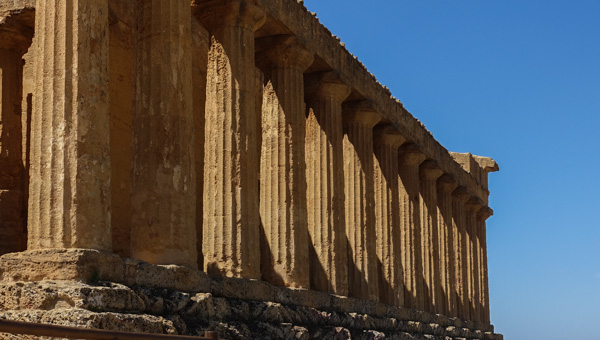
Temple of Heracles
The Temple of Heracles is, of the three main temples in the valley, the least-restored and reconstructed. Yet it still offers some amazing and intriguing aspects. First, the columns that are standing may or may not be from different temples; early archaologists did not have qualms about combining bits and pieces from different sites to create something. Second, this temple is surrounded by huge blocks of stone and parts of the columns, all tumbled together around the upright columns.
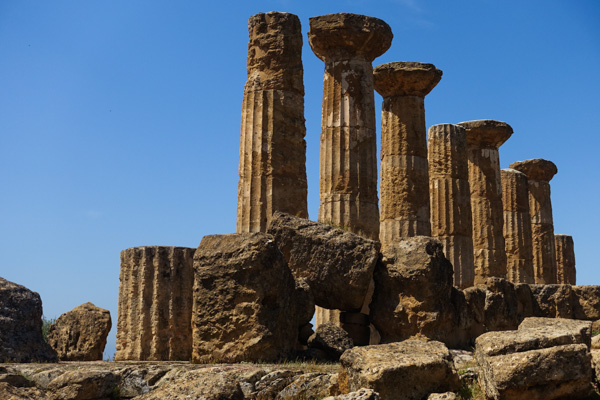
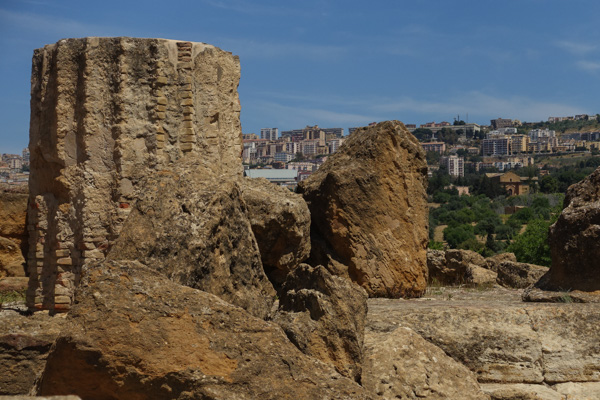
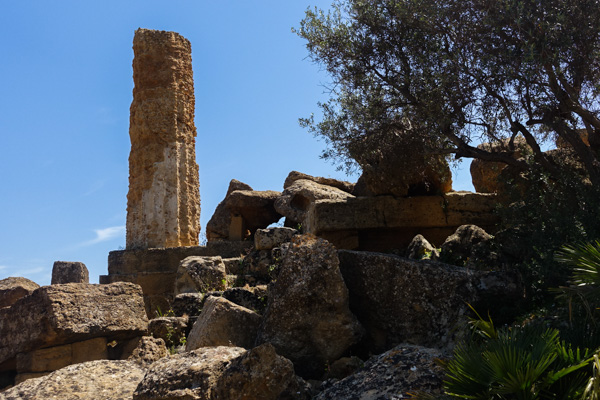
Pretty impressive, eh? It’s powerful to look at this temple and see the ruin all around it. How archaologists are able to piece together any of this amazes me.
We spent a few hours wandering around the Valle dei Templi and probably could have spent more. Next trip. Even in a crowd of similarly amazed tourists, it’s hard not to wonder at the skill and dedication that created these spectacular constructions 25 centuries ago. Some modern-day architects could take lessons in how beautiful buildings can be.
Archaological Museum
Near the Valli dei Templi stands a museum dedicated to finds from the time of the temples. Many of the exhibits are items found in the Valli, but there are also many artifacts found elsewhere in Sicily.
One room had hundreds of small terra-cotta busts and these were our favorites (though the large collection of decorated ceramics was pretty amazing, too). Here are some we liked best:
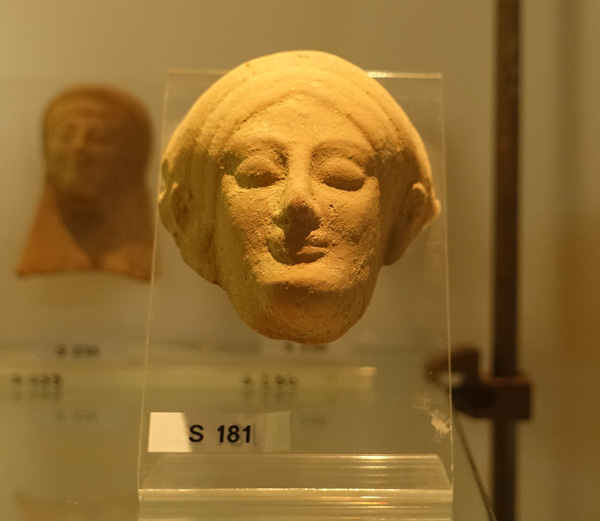
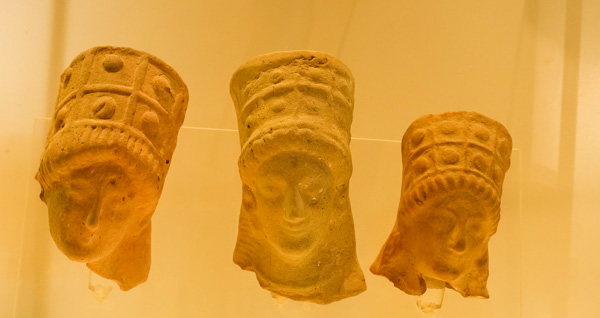
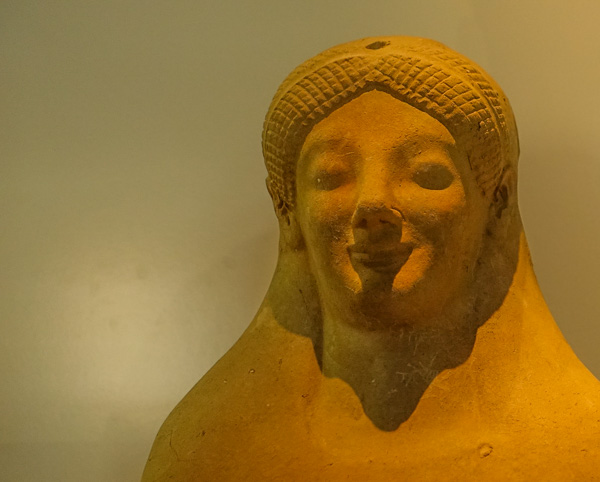
That’s our visit to Agrigento. For us, seeing these looks back to 2,500 years ago and the beauty created by the artists and architects of that time touched us deeply.